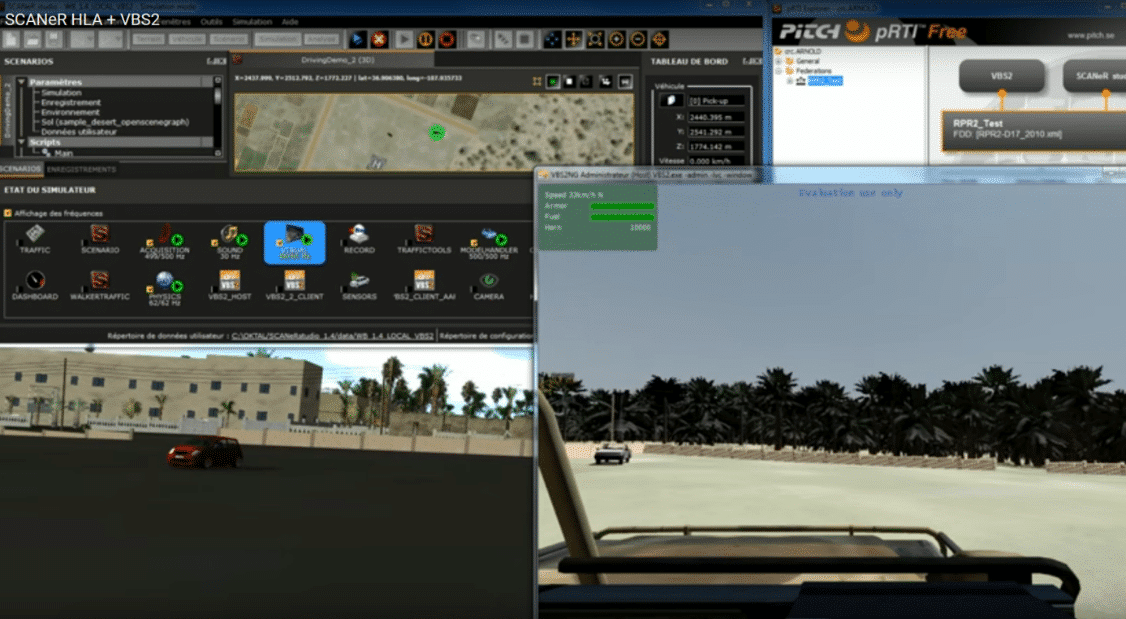The High-Level Architecture (HLA) gives access to the HLAFEDERATE feature. It is a gateway that allows SCANeR studio simulation engine to interact with any other simulation’s computer through HLA regardless of the computing platforms.
HLA is a standard protocol that defines how to create a global simulation made of distributed simulations, which can interact without needing specific development.
With HLA, each participating simulation is called a federate. It interacts with other federates inside a federation.

The communication between federates is done thanks to the services provided by the RTI (Run Time Infrastructure). Federates can “Publish” information to the federation and “Subscribe” information from the federation.
| Technical data | |
| Main features |
|
| Information published from SCANeR to HLA |
|
| Information suscribed from HLA to SCANeR |
|
| Included simulation modules |
|
| Software requirements |
|
| Use cases |
|
